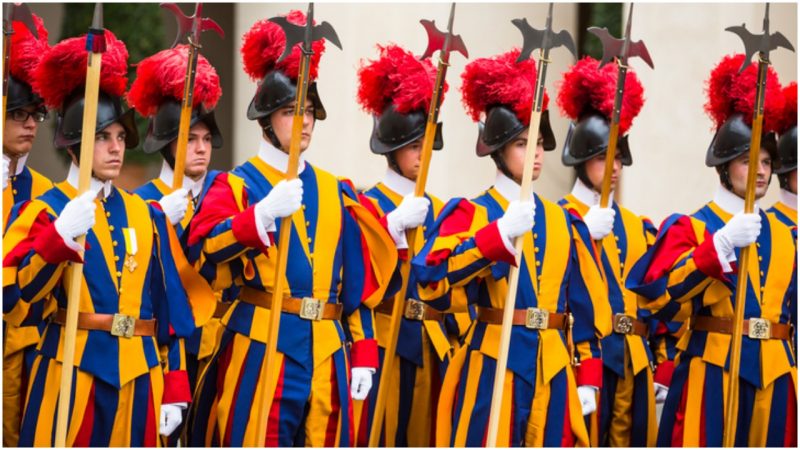For 513 years the Pontifical Swiss Guard have dutifully protected the Pope, and for the majority of that period their distinctive Renaissance weapons and armor have remained largely unchanged — until now.
According to Swissinfo, their iconic curved morion helmet which is worn for ceremonial functions in the Vatican City will no longer be hand-forged in Austria by traditional weaponsmiths, but will be 3D printed in PVC plastic instead.
The new 3D printed plastic helmet is made by scanning one of the 16th century originals, many of which are still in service with the Swiss Guard, and each one takes a full day to make. This is significantly faster than the 130 hours required to craft the metal models by traditional methods.
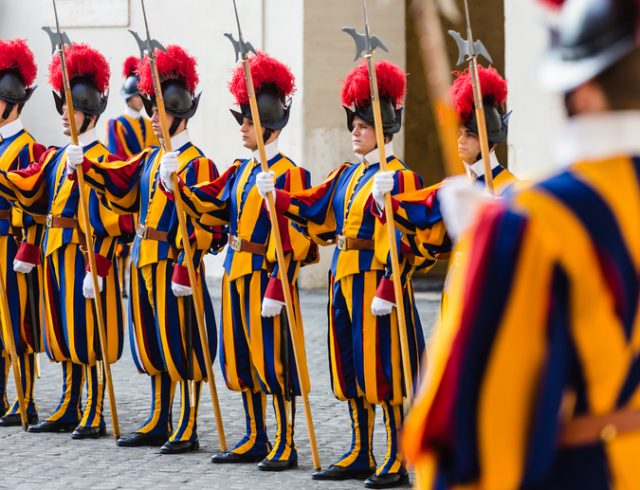
The move to plastic isn’t about saving time or money (they now cost around $1,000 each), or showing off new technology. The decision was made for comfort.
Temperatures in Rome can reach a high average of 32°C/89°F in the summer months and standing guard with 2 kilos of metal on your head can be an ordeal. In contrast, the new helmets weigh 570 grams, protect against the sun’s ultraviolet rays, and have air vents to help the guardsman keep cool.
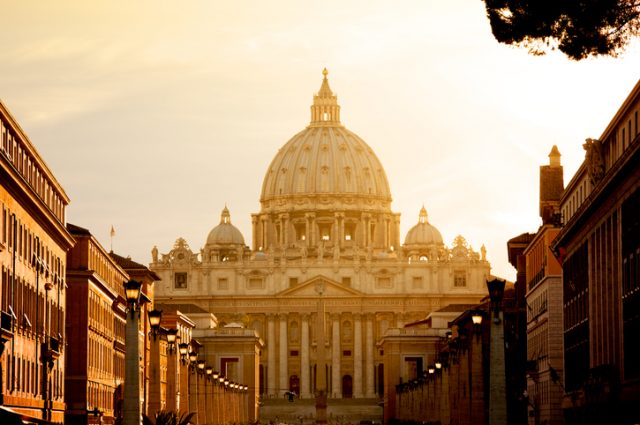
120 helmets have been ordered for 2019, with the costs covered by donations to the Vatican.
The morion originated in Spain in the 16th century. Although it is particularly associated with the Conquistadors, it soon became popular with infantry across Europe and has been part of the uniform of the Pontifical Swiss Guard since their earliest incarnation.
This is why it is decorated with an oak tree, the Della Rovere family crest of Pope Julius II who established the force in 1508. That historic decoration is still a feature on the new plastic models.
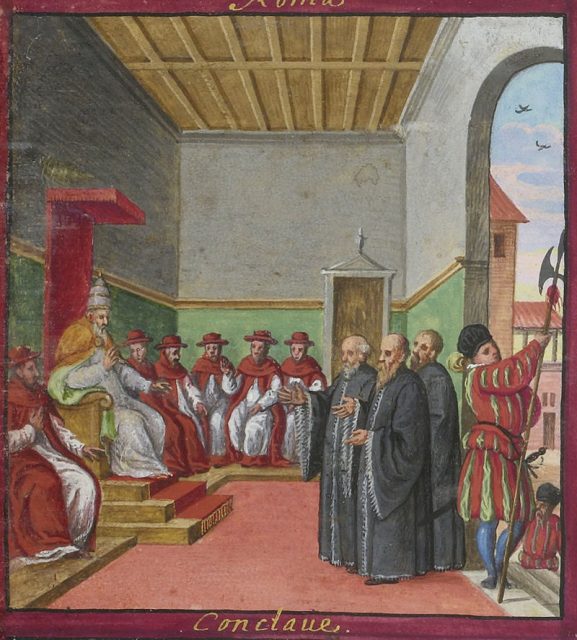
Traditionally the morion was made from two pieces of metal pressed together, with the mohawk-like ridge strengthening the join. The design had the foot soldier in mind and the morion’s flamboyant curve was expertly crafted to deflect a sword blow from above, perhaps from enemy on horseback, or a direct thrust at the head with a spear or pike.
In the Renaissance, Swiss mercenaries were regarded as some of the best warriors in Europe and were a common feature in Italian armies during the period. Eventually they entered into a close alliance with the Papal States, which governed much of central Italy.
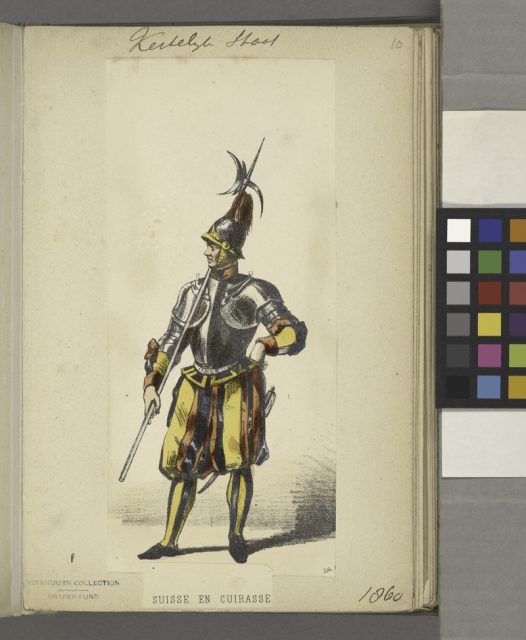
Despite their unsavory origins as mercenaries, recruitment to the Swiss Guard is now motivated by faith — men wishing to join must be Roman Catholics, and have their application verified by their local priest. Like their 16th century predecessors they are a capable fighting force and all new guardsmen must have completed basic training with Swiss Armed Forces.
Though the Pontifical Swiss Guard use modern small arms and body armor in their role as the Vatican City’s security force and the Pope’s bodyguard, for ceremonial functions (and impressing the tourists) they still wield 16th century halberds and swords, some of which are as old as their helmets.
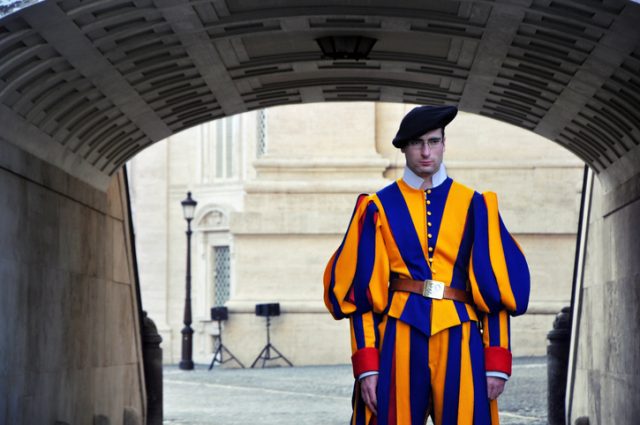
While the hardware has been constant through the centuries, the uniform — despite its 16th century appearance and Dan Brown’s claim that it was designed by the Renaissance artist Michelangelo — has been through a number of changes to keep up with trends. The uniform we’re familiar with today was actually introduced in 1914.
Using historical references and frescoes as his guide, Commandant Jules Repond rolled out the blue, red and yellow colors used on the spectacular Gala uniform. The blue and yellow was taken from the Della Rovere family coat of arms of Julius II, while the red is a tribute to the Medici family coat of arms of Pope Leo X.
The white gloves, high ruffed white collar, and black Basque-style beret were all taken from a 1577 fresco painted by Jacopo Coppi.
Repond did break with the past by leaving out one feature common in Swiss Guard uniforms of the 16th century — he decided not to include a skirt. In a few small ways at least, the Swiss Guard have always been moving with the times.
